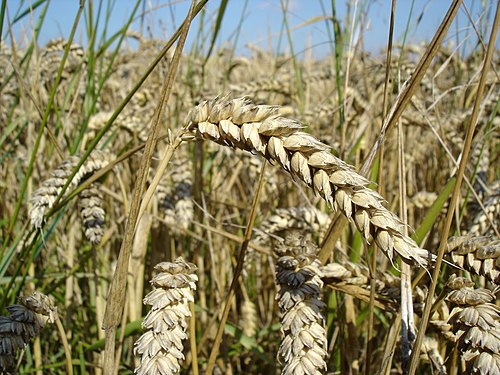Monocotyledonnoun
(botany) Any plant whose seedlings typically have one cotyledon (seed leaf) (in contrast to the two cotyledons typical of dicots), thereby belonging to the taxonomic monocots, formerly variously known as Monocotyledones, Monocotyledonae, or Liliopsida, a class in the angiosperms (Angiospermae), the flowering plants.
Monocotyledonnoun
A plant with only one cotyledon, or seed lobe; a member of the Monocotyledonae.
Monocotyledonnoun
a monocotyledonous flowering plant; the stem grows by deposits on its inside
Monocotyledon
Monocotyledons (), commonly referred to as monocots, (Lilianae sensu Chase & Reveal) are grass and grass-like flowering plants (angiosperms), the seeds of which typically contain only one embryonic leaf, or cotyledon. They constitute one of the major groups into which the flowering plants have traditionally been divided, the rest of the flowering plants having two cotyledons and therefore classified as dicotyledons, or dicots.
Dicotyledonnoun
(botany) A plant whose seedling has two cotyledons.
Dicotyledonnoun
Any plant in what used to be the Dicotyledones.
Dicotyledonnoun
A plant whose seeds divide into two seed lobes, or cotyledons, in germinating.
Dicotyledonnoun
flowering plant with two cotyledons; the stem grows by deposit on its outside
Dicotyledon
The dicotyledons, also known as dicots (or more rarely dicotyls), are one of the two groups into which all the flowering plants or angiosperms were formerly divided. The name refers to one of the typical characteristics of the group, namely that the seed has two embryonic leaves or cotyledons.















